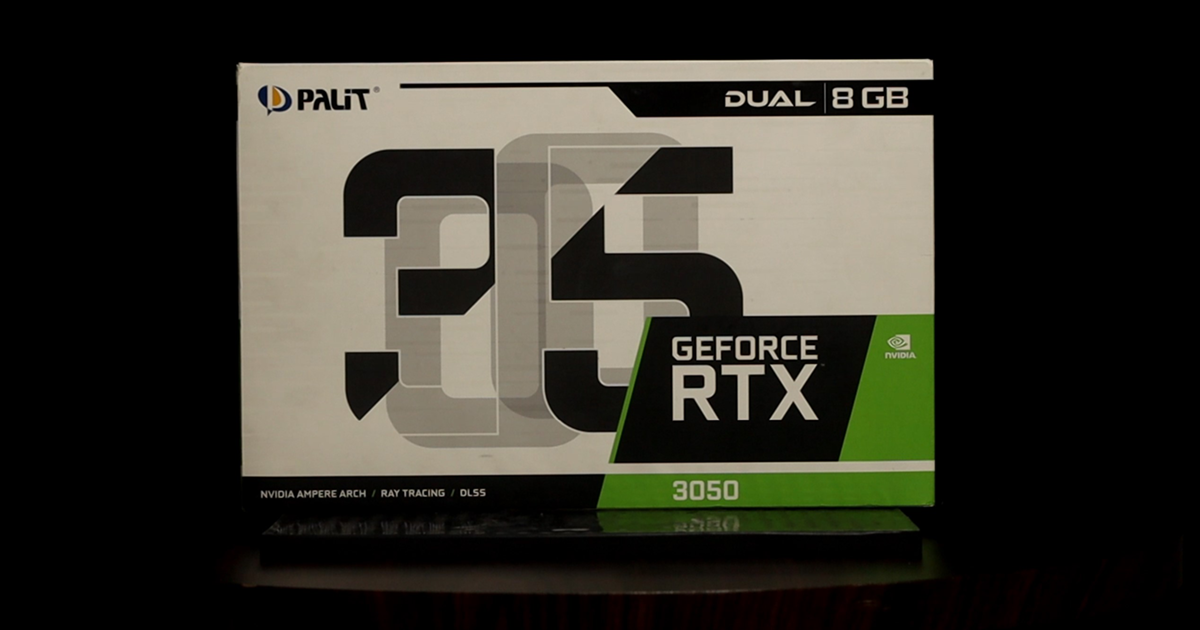The graphics card market is slowly recovering. What seemed like an impossible task a few months ago is now becoming easier to find in stock, not only high-end models but also mid-range options. This has also been accompanied by the long-awaited price drop that is approaching the manufacturers' official recommendations for the first time.
It is in this scenario that we have the GeForce RTX 3050, NVIDIA's great bet to conquer the mid-range and entry-level markets by offering a truly competitive price and ray-tracing graphics for the masses. Does it really deliver as promised? My name is Gino and today we analyze the RTX 3050.
Since its unveiling, this card aims to replace the super popular GTX 1060 by being very affordable and offering more than competent performance. It features 8GB of GDDR6 memory and PCI Express 4.0 compatibility. The RTX 3050 is NVIDIA's cheapest product that includes Raytracing and DLSS features, the famous image reconstruction technology that increases frames and greatly enhances the lifespan of this card.
The reviewed edition is the Palit GeForce RTX 3050 Dual OC, which comes with a slight factory overclock. Its exact specifications can be seen here. As a positive point, it has a power consumption of only 140W, requiring a minimum power supply of 550W and a single PCI connector. In terms of connectivity, it features 3 Display Port 1.4 ports and 1 HDMI 2 port. The design is quite sleek, with the illuminated RGB Geforce logo standing out.
The testing equipment consists of a Core i7 12700F, accompanied by 16GB of 3200 Mhz DDR4 RAM, an MSI B660M motherboard, and an 850W EVGA power supply. The results are very interesting, demonstrating a quite remarkable performance.
At 1080p, with multiple games like Horizon Zero Dawn, Shadow of the Tomb Raider, and Borderlands 3, it averages 60 frames per second on maximum settings. In the eSports gaming side, it more than meets expectations, delivering over 160 FPS in games like Dota 2 and over 250 in Valorant, while in Fortnite it drops a bit with a maximum of 73 fps.
When we come to heavier titles like Cyberpunk 2077, that's where we begin to see the limits of the RTX 3050 with an average of 48 FPS.
But the most interesting point is ray-tracing, with quite interesting results. In Cyberpunk, performance is heavily penalized, dropping as low as 15 fps. However, this is where DLSS, NVIDIA's proprietary technology, plays a crucial role by increasing FPS, reaching almost 28 in Quality mode. This is quite impressive considering that Cyberpunk is one of the most demanding games that utilizes this new technology.
Another example is Metro Exodus Enhanced Edition, where the benefits of Raytracing are truly noticeable thanks to Nvidia's RT Cores, averaging around 48 FPS on maximum settings. Although the RTX 3050 is not designed for 1440p, it can be used with very close to the limit performance in various games. These figures improve with DLSS implementation, but it's definitely not intended for this resolution.
Even in the most demanding games, the temperature does not exceed 75 degrees, accompanied by minimal noise, making it very quiet at maximum load.
The results are very clear: the RTX 3050 performs well for 1080p in all scenarios. Now all this comes at a more than reasonable price, costing between 1500 and 1600 soles, with its closest competitor being the RTX 2060, which is also around that price. Between the two, I would prefer to invest in an RTX 3050 as it is a newer card that will have future support.
Answering the initial question, is it really as good as it promises? Well, considering its price range, it is a not very demanding card in terms of requirements and provides a very acceptable performance, offering a good experience at 1080p. The combination of technologies like DLSS helps complement decent ray-tracing performance. Overall, it is an option that should be seriously considered.

